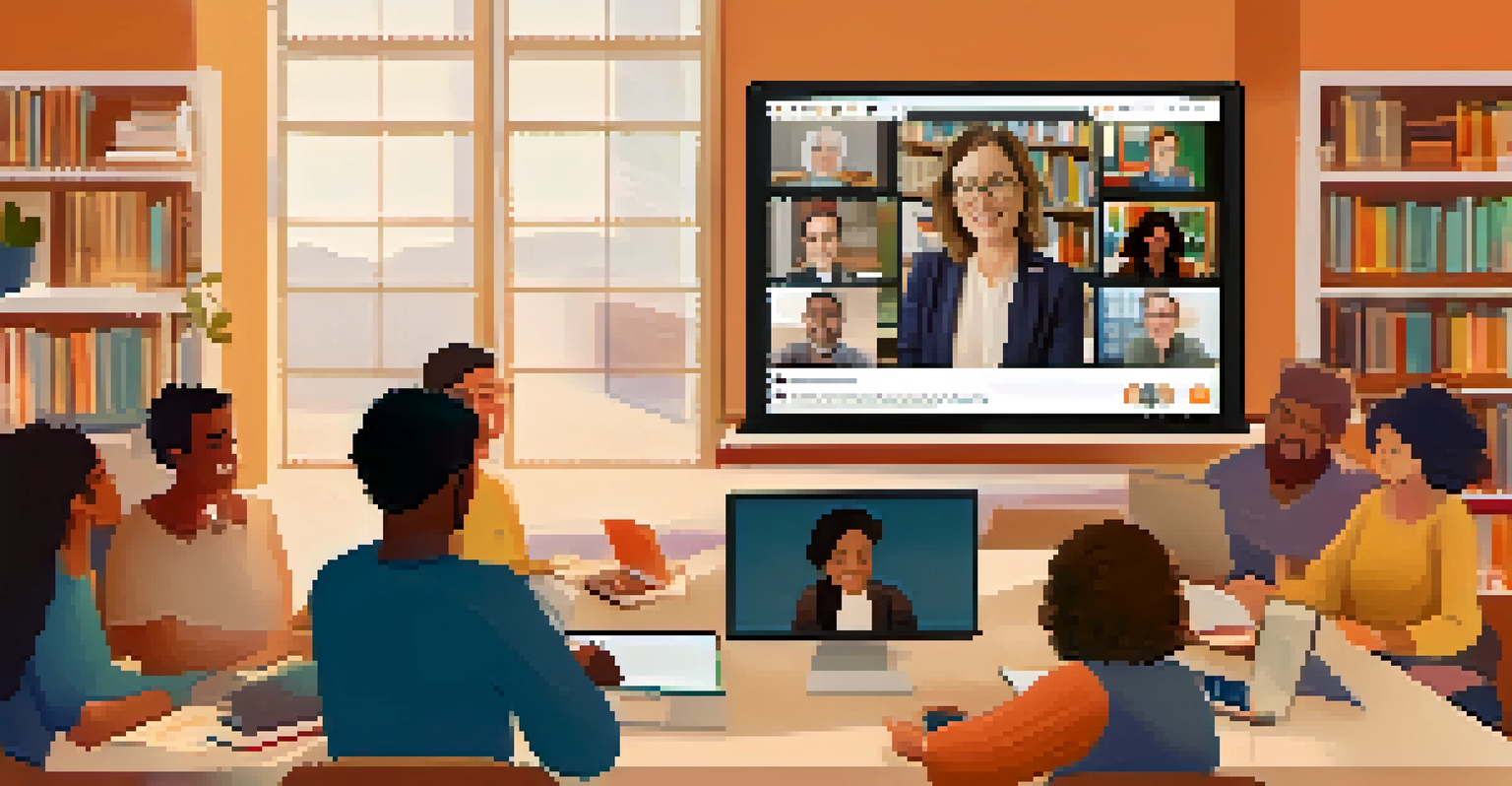Collaborative Learning: A Key Component of CPD for Educators

Understanding Collaborative Learning in Education
Collaborative learning is an educational approach that involves students working together to solve problems or complete tasks. This methodology emphasizes the importance of social interaction in the learning process, where educators can share knowledge and experiences. By fostering a community of practice, educators not only enhance their own skills but also contribute to the growth of their peers.
Alone we can do so little; together we can do so much.
In essence, collaborative learning shifts the focus from individual achievement to collective success. This is particularly beneficial in continuing professional development (CPD), where collaboration can lead to innovative solutions and shared resources. Imagine a group of teachers brainstorming new strategies to engage students; the diversity of ideas can spark creativity and lead to better outcomes.
Related Resource
Moreover, collaborative learning encourages a supportive environment where educators feel more comfortable sharing their challenges and triumphs. This sense of community can be incredibly motivating, making the CPD process not just about professional growth, but also about building lasting relationships within the educational sphere.
Benefits of Collaborative Learning for Educators
One of the primary benefits of collaborative learning is the exchange of diverse perspectives. When educators come together, they bring unique insights from their experiences, which can enrich the learning process. For instance, a teacher from a different school might introduce a new technology that has proven effective in their classroom, benefiting others who might not have considered it.

Additionally, collaborative learning promotes critical thinking and problem-solving skills. Through discussions and group activities, educators can challenge each other's ideas, leading to deeper understanding and better teaching practices. It's like a brainstorming session where every voice matters, and the best ideas rise to the top.
Collaborative Learning Enhances Growth
Working together allows educators to share diverse perspectives, leading to improved teaching practices and professional development.
Finally, this approach helps in building a professional network. As educators collaborate, they establish connections that can lead to mentorship opportunities, resource sharing, and future collaborations. In a world where educational demands are constantly evolving, having a strong network can be an invaluable asset.
Implementing Collaborative Learning in CPD Programs
Integrating collaborative learning into CPD programs requires thoughtful planning and structure. Educators should be encouraged to participate in group activities, workshops, and discussions that foster a sense of teamwork. For instance, breakout sessions during conferences can facilitate small group interactions, allowing for more personalized exchanges of ideas.
Collaboration allows teachers to set goals, share resources, and work together to improve student learning.
Creating a safe space for sharing is crucial. Educators should feel comfortable expressing their thoughts without fearing judgment. This can be achieved by setting ground rules that promote respect and open-mindedness, ensuring that everyone has the opportunity to contribute.
Related Resource
Additionally, leveraging technology can enhance collaborative learning. Online platforms, such as forums or collaborative documents, allow educators to connect beyond physical boundaries. This not only expands the reach of collaborative efforts but also accommodates different schedules and preferences.
Case Studies: Successful Collaborative Learning Initiatives
Looking at successful case studies can provide valuable insights into effective collaborative learning initiatives. For example, a school district implemented a peer observation program where teachers observed each other’s classrooms and provided feedback. This initiative not only helped educators refine their practice but also strengthened their sense of community.
Another example is the establishment of professional learning communities (PLCs), where educators meet regularly to discuss instructional strategies and student outcomes. Data from these groups show significant improvement in teaching effectiveness and student engagement, demonstrating the power of collaborative learning.
Effective Implementation Strategies
Integrating collaborative learning into CPD programs involves structured activities, creating safe spaces for sharing, and leveraging technology.
These success stories showcase that when educators work together, the impact extends beyond individual classrooms. They highlight that collaboration can lead to systemic change, ultimately benefiting the entire educational landscape.
Overcoming Challenges in Collaborative Learning
While collaborative learning offers numerous benefits, it can also present challenges. One common hurdle is the varying levels of engagement among participants. Some educators may be more enthusiastic than others, which can lead to imbalances in contribution. Addressing this requires setting clear expectations and encouraging equitable participation.
Another challenge is the potential for conflict among group members. Differing opinions can lead to disagreements, which, if not managed properly, may disrupt the learning process. Establishing ground rules for respectful dialogue and conflict resolution can help navigate these situations effectively.
Related Resource
Finally, time constraints can hinder collaborative efforts. Educators often juggle multiple responsibilities, making it difficult to find time for collaboration. Finding ways to integrate collaborative activities into existing schedules, such as during staff meetings or professional development days, can help alleviate this issue.
The Role of Leadership in Promoting Collaboration
Leadership plays a crucial role in fostering a culture of collaborative learning within educational institutions. School leaders can set the tone by prioritizing collaboration in professional development initiatives. For example, providing dedicated time for teachers to work together can signal its importance and encourage participation.
Additionally, leaders should model collaborative behaviors themselves. When educators see their leaders engaging in teamwork and valuing input from others, they are more likely to emulate those behaviors. It’s about creating an environment where collaboration is not just encouraged but celebrated.
Leadership Cultivates Collaboration
School leaders play a vital role in promoting a culture of collaboration by modeling teamwork and providing necessary resources.
Lastly, leaders can provide the necessary resources and support for collaborative learning. This may include training on effective collaboration techniques, access to technology, or even funding for collaborative projects. By investing in these areas, leadership can significantly enhance the collaborative learning experience.
The Future of Collaborative Learning in CPD
As education continues to evolve, the future of collaborative learning in CPD looks promising. Advances in technology are making it easier for educators to connect and collaborate, regardless of geographical barriers. Virtual workshops and online communities are becoming increasingly popular, allowing for a more flexible approach to professional development.
Furthermore, the growing emphasis on social-emotional learning underscores the importance of collaboration. Educators are recognizing that building relationships and working together is essential for both their own growth and the well-being of their students. This shift in focus is likely to drive more collaborative initiatives in the coming years.

Ultimately, the future of collaborative learning in CPD will likely be characterized by a blend of in-person and online interactions, fostering a dynamic and inclusive learning environment. Educators will continue to learn from one another, creating a rich tapestry of shared knowledge and experiences that enhance their practice.